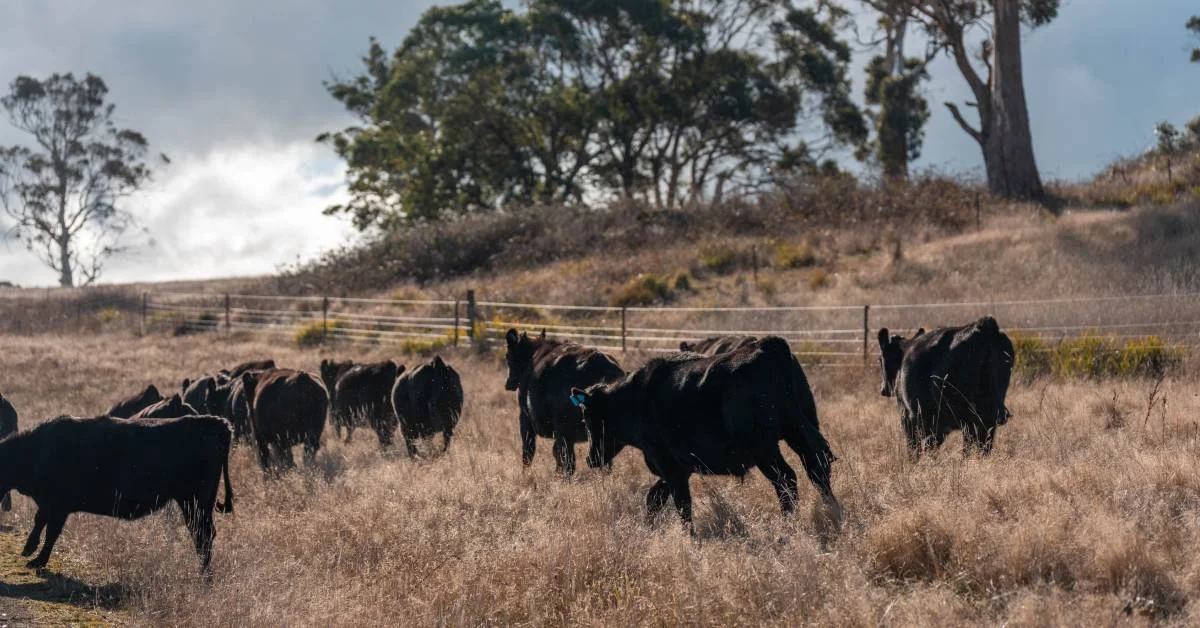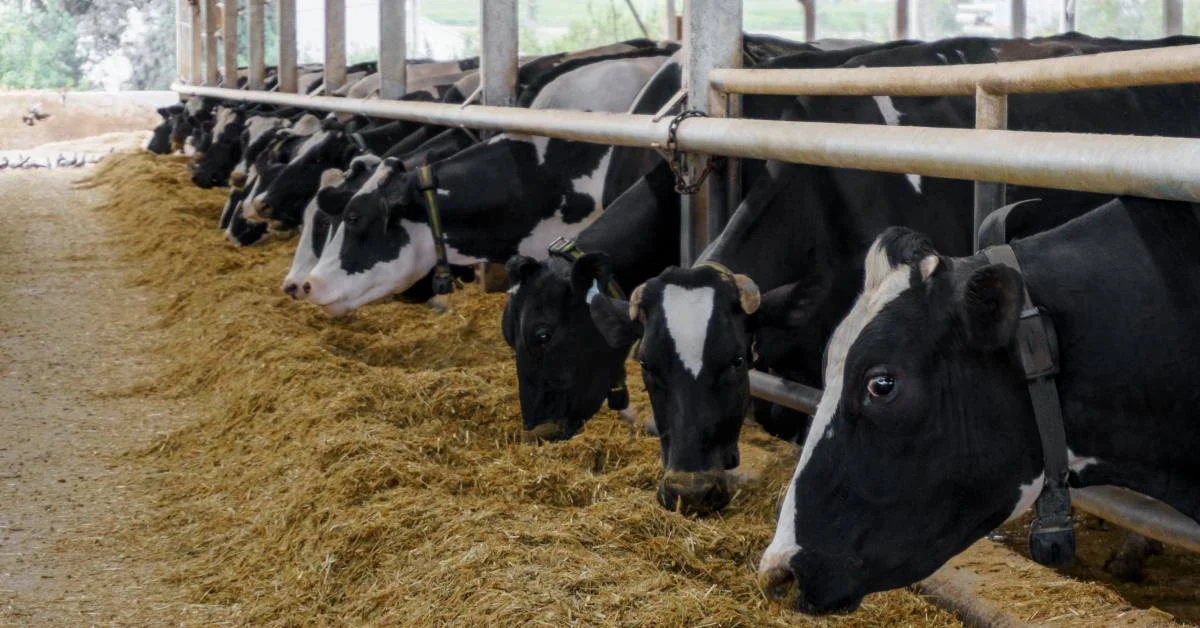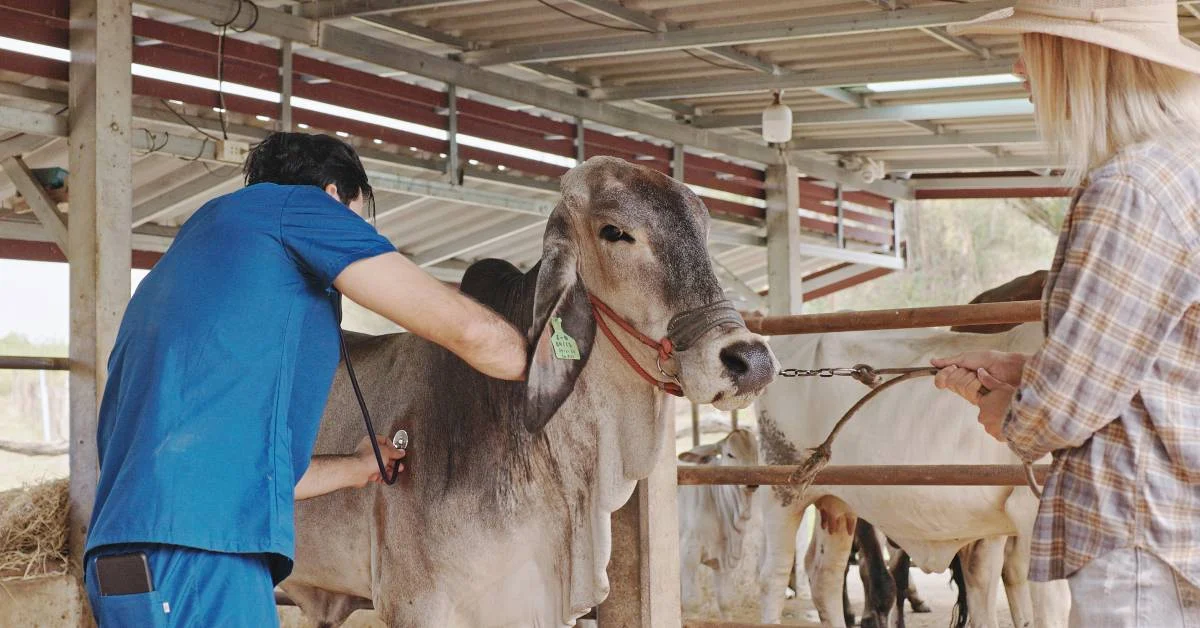Agriculture is undergoing a remarkable transformation, and precision in livestock farming is at the forefront of this change. Gone are the days when farmers solely relied on experience and instincts to manage their livestock. Today, technology plays a crucial role in revolutionizing livestock management, with cattle record-keeping software emerging as a pivotal tool in this transformation.
Understanding Precision Livestock Farming
Defining Precision Livestock Farming
Precision livestock farming (PLF) represents a modern agricultural approach that harnesses technology, data, and advanced analytics to optimize livestock production processes. Its goal is to maximize the efficiency and productivity of livestock operations while minimizing environmental impact and ensuring animal well-being.
In traditional livestock farming, decisions often rely on general guidelines and experience. However, PLF adopts a more individualized and data-centric approach, considering factors like
- Health Monitoring: Continuous monitoring of vital signs and health parameters of each animal.
- Feed and Nutrition: Precise feeding schedules and nutrition plans based on individual nutritional needs.
- Reproduction: Optimizing breeding cycles and fertility management for improved breeding outcomes.
- Environmental Control: Monitoring and controlling factors like temperature, humidity, and ventilation in livestock housing.
- Welfare and Behavior: Understanding animal behavior and addressing stressors to improve overall well-being.
Significance of Precision Livestock Farming in Modern Agriculture
Precision livestock farming is gaining immense significance in modern agriculture for several compelling reasons:
- Efficiency: PLF enhances production efficiency, reducing waste and resource consumption.
- Sustainability: By optimizing resource use and minimizing environmental impact, PLF aligns with sustainability goals in agriculture.
- Animal Welfare: Individualized care and attention to each animal’s needs contribute to improved animal welfare, which is increasingly important to consumers.
- Data-Driven Decision-Making: PLF provides actionable insights derived from data, leading to better-informed decisions and improved outcomes.
- Economic Benefits: Increased productivity and reduced operational costs can lead to higher profitability for farmers.
The Role of a Cattle Record-Keeping Software
A key element of precision livestock farming is the use of cattle record-keeping software, which provides the digital infrastructure for collecting, organizing, and analyzing data on the cattle herd.
Data Storage and Gathering
Farmers can capture and save a variety of data using cattle record-keeping software, including:
- Individual animal information (e.g., identification, birthdate, breed).
- Health and veterinary records (e.g., livestock vaccinations, treatments, illnesses).
- Reproduction and breeding data (e.g., breeding dates, pregnancy status).
- Nutrition and feeding records (e.g., diets, feeding schedules).
- Growth and performance metrics (e.g., weight gain, milk production)
Data Analysis and Insights
One of the most significant advantages of this custom built agriculture software lies in its analytical capabilities. By consistently inputting data over time for different types of cattle, farmers can derive valuable insights. For example:
- Identifying trends in animal health to detect and address issues proactively.
- Monitoring the effectiveness of different feeding regimes and adjusting them for optimal results.
- Tracking the reproductive performance of individual animals to improve breeding outcomes.
- Evaluating the overall growth and performance of the herd.
These insights empower farmers to make data-driven decisions that significantly impact the efficiency and productivity of their cattle operations.
Automation and Alerts
Cattle record-keeping software can automate various tasks and send alerts or notifications to farmers when specific conditions or events occur while raising beef cattle. For instance:
- Sending reminders for upcoming vaccinations or treatments.
- Alerting farmers when an animal’s vital signs indicate potential health issues.
- Notifying when it’s time to adjust feeding schedules or quantities based on growth rates.
Reporting and Compliance
Many digital livestock record keeping software solutions offer reporting features that allow farmers to generate detailed reports for various purposes. This can include compliance reports for regulatory agencies, financial reports for accounting purposes, and performance reports for assessing the overall health and productivity of the herd.
Integration with Other Farm Management Tools
Cattle record-keeping software often integrates with other farm management tools and systems. This integration streamlines data flow across different aspects of the operation, such as financial management, supply chain management, and environmental monitoring.
Key Features of a Cattle Record Keeping Software
Cattle record-keeping software exists in various forms, each with its set of features. Nevertheless, benefits of digital farming solutions include:
User-Friendly Interface
An intuitive user interface is essential for easy data entry and navigation. User-friendly design ensures that even farmers with limited technical expertise can effectively use the software.
Data Security
Data security is paramount, especially when handling sensitive livestock information. Robust security measures safeguard data from unauthorized access or breaches.
Scalability
The software should be scalable to accommodate the needs of farms of different sizes. Whether managing a small family farm or a large commercial operation, the software should adapt to specific requirements.
Mobile Compatibility
Mobile compatibility enables farmers to input data directly from the field using smartphones or tablets. Real-time data entry ensures that no critical information is overlooked.
Integration
Integration capabilities are crucial for linking the software with other farm management tools, such as accounting software, environmental monitoring systems, or automated feeding systems.
Embracing Data-Driven Decision-Making in Precision Farming
In the realm of precision farming, the adoption of a data-driven approach stands as a foundational shift in modern agricultural practices. The significance of data-driven decision-making cannot be emphasized enough, as it reshapes how farmers manage their operations. This approach, centered on data, is particularly critical in precision livestock farming, where each decision holds the potential to influence livestock health, welfare, and productivity.
Precise and Timely Insights:
Data-driven decision-making helps farmers understand livestock operations, providing insights into health, nutrition, reproduction, and performance, enabling swift interventions and identifying trends.
Optimizing Resource Utilization:
Effective resource allocation forms a central pillar of precision farming. Through data analysis, farmers can determine the most efficient utilization of resources such as feed, water, and veterinary care..
Elevating Animal Health and Welfare:
Data-driven decision-making enhances livestock health and welfare by enabling farmers to monitor vital signs, detect illness early, and initiate timely interventions to minimize stress and ensure animal well-being.
Precision in Breeding:
In precision livestock farming, breeding decisions are grounded in data analysis rather than intuition. By tracking the reproductive performance of individual animals and their genetic attributes, farmers can make informed choices to enhance breeding outcomes.
Reducing Environmental Impact:
Precision farming uses data-driven decision-making to optimize environmental conditions in livestock housing facilities, reducing energy consumption, waste, and promoting sustainability.
Economic Efficiency:
Streamlining livestock data frequently translates into improved economic efficiency. By optimizing resources, curtailing losses, and maximizing productivity, farmers can enhance profitability.
Continuous Advancement:
The data-driven approach fosters a culture of ongoing improvement in precision farming. Farmers can scrutinize the outcomes of their decisions over time, assess their efficacy, and adjust their management practices accordingly. This iterative process of enhancement ensures that farming operations become progressively more efficient and productive with each iteration.
Cattle Record Keeping Software: A Vital Element in the Digital Revolution of Livestock Farming
The transformation of livestock farming through digitalization is well underway, and at the core of this evolution is cattle record-keeping software. This software is driving significant changes in how farmers manage their livestock operations. In this section, we will explore how record-keeping software plays a central role in this digital transformation and discuss the advantages of embracing digital solutions in farming
The Digital Revolution:
Traditional methods of livestock farming heavily relied on manual record-keeping, intuition, and the experience of farmers. However, with the continuous advancement of technology, agriculture is rapidly changing. Cattle record-keeping software is at the forefront of this digital revolution.
These software solutions digitize the collection, organization, and analysis of data related to cattle herds. The era of manual record-keeping with pen and paper is giving way to efficient and precise digital tools. This shift towards digital record-keeping represents a pivotal step in modernizing farming practices.
Advantages of Digital Farming Solutions:
The benefits of adopting digital farming solutions, including cattle record-keeping software, are extensive. Here are some key advantages:
Data Precision:
Digital record-keeping software ensures the accuracy and reliability of data. Manual record-keeping is susceptible to errors that can lead to inaccuracies in critical information like health records, breeding data, and feeding schedules. In contrast, software solutions minimize the risk of errors and provide a dependable source of data for decision-making.
Operational Efficiency in Livestock Management
Efficiency is a hallmark of digital farming solutions. Farmers can input and access data swiftly, saving time and effort. This efficiency extends to data analysis, where software can identify trends and patterns that may be overlooked in manual records. As a result, farmers can make well-informed decisions promptly.
Remote Accessibility
Many cattle record-keeping software solutions offer remote accessibility. Farmers can monitor their herds and access data from different locations using computers or mobile devices. This real-time access ensures that important information is readily available, even when they are not physically present on the farm.
Data Analysis and Insights
Software solutions empower farmers to extract valuable insights from their data. By monitoring parameters such as animal health, nutrition, and reproduction, farmers can make data-driven decisions that optimize their operations. For example, they can adjust feeding schedules based on growth rates or detect potential health issues early.
Automation and Alerts
Many software solutions provide automation features, including sending alerts and notifications. Farmers can receive reminders for vaccinations, treatments, or feeding schedules. Additionally, automated alerts can notify farmers of potential issues, such as abnormal vital signs in an animal, enabling swift intervention.
Compliance and Reporting
Digital records simplify compliance with regulatory standards. Farmers can easily generate accurate reports for regulatory agencies, demonstrating adherence to environmental, animal welfare, and food safety regulations. This not only streamlines compliance but also enhances the farm’s reputation.
Integration with Farm Management Tools
Cattle record-keeping software often integrates seamlessly with other farm management tools and systems. This integration ensures a smooth flow of data across various aspects of the operation, such as accounting, supply chain management, and environmental monitoring.
Cost Efficiency
Digital solutions can lead to cost savings over time. By optimizing resource utilization, reducing waste, and preventing losses due to health issues or inefficient practices, farmers can enhance their profitability.
Features of Livestock Data Management Software
Livestock Data Management Software and livestock health monitoring stands as a critical tool for modern livestock operations. Technology in ranching not only simplifies cattle data management but also aids in visualizing and analyzing data for making informed decisions.
Simplified Cattle Data Management:
Livestock Data Management Software plays a pivotal role in simplifying the task of managing cattle-related information.
Centralized Data Repository:
The software offers a centralized platform for storing all cattle-related data, including details about individual animals, health records, reproductive information, feeding schedules, and performance metrics. This eliminates the need for cumbersome paper records and ensures that vital information is easily accessible from a single digital source.
Efficient Data Analytics in Agriculture
The software offers a centralized platform for storing all cattle-related data, including details about individual animals, health records, reproductive information, feeding schedules, and performance metrics. This eliminates the need for cumbersome paper records and ensures that vital information is easily accessible from a single digital source.
Automation of Cattle Herd Management
Many software solutions come equipped with automation features, such as alerts and reminders for tasks like vaccinations, treatments, or breeding schedules. These automated functions simplify routine activities and ensure that critical tasks are not overlooked.
Customization Options
Livestock Data Management Software often provides customization options to align with specific farm management practices. Farmers can create custom data fields and reports tailored to their specific needs, ensuring that the software adapts seamlessly to their unique requirements.
Integration Capabilities
These software solutions can integrate seamlessly with other farm management tools and systems, facilitating the smooth flow of data across various facets of the operation. Integration with accounting software, environmental monitoring systems, and automated feeding systems enhances overall farm management efficiency.
Data Visualization and Analysis:
Effective data visualization and analysis are essential for making informed decisions in livestock farming. Livestock Data Management Software offers tools to visualize and analyze cattle data. Here’s how these features contribute to improved decision-making:
Data Visualization:
Software tools often include data visualization features that present information in easily understandable formats. Farmers can view graphical representations of data, such as charts and graphs, that highlight trends, patterns, and irregularities. This visual representation simplifies the comprehension of complex data sets.
Trend Identification:
With the analytical capabilities of the software, farmers can identify trends and patterns within their cattle data. For instance, they can detect correlations between feeding schedules and growth rates or monitor the health trends of individual animals. Recognizing these trends enables proactive decision-making to optimize herd management.
Data-Driven Decision-Making:
Analytical tools within the software empower data-driven decision-making. Farmers can evaluate the impact of various factors on cattle health, nutrition, and reproduction. This data-centric approach allows them to make well-informed decisions based on concrete evidence, such as adjusting feeding routines or implementing health interventions.
Predictive Analytics
Some advanced Livestock Data Management Software solutions offer predictive analytics capabilities. By analyzing historical data and current trends, these tools can provide insights into future outcomes. For example, they can predict the optimal time for breeding or anticipate potential health issues based on historical data patterns.
Real-Time Monitoring:
The software often supports real-time monitoring of vital signs and health parameters. Farmers can instantly visualize this data, enabling swift responses to any anomalies or issues. Real-time monitoring proves particularly beneficial for early disease detection and immediate intervention.
Implementing Digital Farming Solutions
As precision livestock farming continues to transform the agricultural sector, the selection of appropriate record-keeping software and the seamless integration with comprehensive livestock management systems are pivotal considerations. In this section, we will provide guidance on the process of choosing suitable record-keeping software for precision livestock farming and delve into the advantages of integrating digital farming solutions into broader livestock management systems.
Choosing the Right Record-Keeping Software:
Selecting the appropriate record-keeping software for precision livestock farming represents a critical decision that can have a substantial impact on your farming operation. To assist you in making an informed choice, here are key factors to consider:
Farm Size and Scope:
Initiate the selection process by evaluating the size and scope of your livestock operation. It’s essential to align the chosen software with the specific needs of your farm, whether it’s a small family-owned operation or a large-scale commercial enterprise. Some software solutions cater to particular farm sizes, offering tailored benefits that suit your operation.
Data Requirements:
Carefully assess livestock operation’s data requirements. Identify the types of data you need to collect and manage, encompassing individual animal details, health records, reproductive data, feeding schedules, and performance metrics.
User-Friendly Interface:
Prioritize software that boasts a user-friendly interface. An interface that simplifies data entry and navigation is crucial, especially if your team includes individuals with varying levels of technical proficiency. An intuitively designed interface not only ensures efficient usage but also reduces the need for extensive training.
Data Security and Compliance:
Give utmost importance to data security and compliance features in the software. Given the sensitivity of livestock data, choose a solution that offers robust data security measures to protect against unauthorized access and breaches. Additionally, verify that the software facilitates compliance with relevant regulations, including those related to environmental standards and animal welfare.
Scalability and Flexibility:
Consider the scalability and flexibility of the software. Your farm may undergo changes or growth in the future, so it’s crucial to select software that can adapt to accommodate potential developments in your livestock operation. Look for a solution that can scale as needed and provides options for customization.
Integration with Livestock Management Systems:
The integration of digital farming solutions with comprehensive livestock management systems can lead to transformative improvements in your farm’s efficiency and decision-making. Here’s a closer look at the benefits of seamless integration:
Data Uniformity:
Integration guarantees data uniformity across different facets of your livestock operation. Whether you’re managing financial aspects, environmental conditions, or feeding routines, integrated systems rely on a single data source, mitigating the risk of inconsistencies and errors.
Optimized Resource Management:
Integrated systems facilitate more efficient resource management. Data from various sources can be analyzed in a holistic manner, enabling you to optimize resource allocation, minimize waste, and enhance overall operational efficiency. For example, feeding schedules can be adjusted based on growth patterns and nutritional requirements, reducing feed wastage.
Simplified Reporting:
Integration simplifies the reporting process. Comprehensive reports can be generated effortlessly, offering a holistic view of sustainable livestock farming. This not only facilitates compliance with regulatory standards but also streamlines decision-making based on accurate, up-to-date information.
Real World Applications
Case Study: Harnessing Technology for Precision Dairy Farming Success
Farm Name: Smith Family Dairy Farm
Location: Wisconsin, USA
Context:
The Smith Family Dairy Farm, a mid-sized dairy operation in Wisconsin with around 200 dairy cows, encountered challenges in efficiently managing their cows’ health, nutrition, and reproductive records. Conventional record-keeping and traditional farming practices led to inconsistencies and missed optimization opportunities.
Digital Solution:
To tackle these issues, the Smith family decided to embrace digital farming solutions. They introduced a comprehensive farm management software system tailored to dairy farming. This system seamlessly integrated various technologies and data sources, including IoT sensors, milking parlor automation, and cloud-based data analytics.
Noteworthy Improvements:
- Health Oversight: IoT sensors affixed to each cow continuously monitored vital signs such as body temperature, body condition scoring and activity levels. Any deviations from normal patterns triggered alerts, enabling timely responses to health concerns.
- Nutrition Enhancement: The software meticulously tracked individual cow feeding behaviors and assessed nutritional needs based on factors like lactation stage and milk production. It subsequently fine-tuned feeding schedules and quantities to optimize the cows’ nutrition, resulting in enhanced milk yields.
- Reproductive Excellence: The system furnished an all-encompassing view of each cow’s reproductive history and cycle data. Leveraging this data, the farm meticulously planned breeding schedules and implemented synchronization protocols, notably reducing the calving interval.
- Data-Informed Decision-Making: Cloud-based data analytics and visualization tools empowered the farm to make informed decisions. They could effortlessly identify trends, pinpoint outliers, and adapt their practices based on solid data.
Achievements:
- Heightened Milk Production: In the initial year of adopting digital solutions, the Smith Family Dairy Farm observed a remarkable 15% upswing in milk production per cow.
- Trimmed Health Expenditure: Swift detection of health concerns and timely interventions brought about a reduction in veterinary expenses and curbed disease spread within the herd.
- Enhanced Reproductive Efficiency: The farm accomplished a notable 20% reduction in the calving interval, translating to more efficient breeding practices and amplified herd productivity.
- Sustainability Practices: Precise feeding and health management practices translated into diminished feed wastage and a reduced environmental footprint, aligning the farm with sustainable agricultural principles.
Overcoming Challenges in Precision Livestock Farming
The journey of implementing digital farming solutions for precision livestock farming comes with its fair share of challenges. Tackling these challenges is essential to ensure the successful integration and long-term sustainability of modern agricultural practices.
Common Challenges and Solutions:
Challenge 1: Resistance to Change
Solution: It’s typical for resistance to change to emerge when introducing new technology to the farm. To overcome this, provide comprehensive training and support to farm personnel, emphasizing the advantages of digital solutions, such as time savings, enhanced data accuracy, and improved decision-making.
Challenge 2: Data Management Complexity
Solution: Handling large volumes of data can become overwhelming. Opt for user-friendly software that simplifies data entry and offers data visualization tools for easier analysis. Regular software updates ensure that it remains efficient and up-to-date.
Challenge 3: Cost Considerations
Solution: Implementing digital farming solutions may involve initial costs. Conduct a thorough cost-benefit analysis to demonstrate the long-term savings achieved through improved efficiency, resource optimization, and reduced losses due to data-driven decision-making.
Ensuring Data Security:
Data security is of paramount importance in the realm of digital farming solutions. To address this concern, consider these measures:
- Data Encryption: Ensure that data is transmitted and stored in an encrypted form, protecting it from unauthorized access.
- Access Control: Implement stringent access control measures to restrict data access to authorized personnel only.
- Regular Backups: Regularly backup data to prevent loss due to technical failures or security breaches.
- Compliance: Adhere to data privacy regulations and standards to maintain data security and compliance.
The Future of Precision Livestock Farming:
Advancements in Digital Farming:
The future of livestock farming is closely intertwined with digital solutions. Advancements in technology, including AI and IoT, will continue to shape the industry. Expect further automation, enhanced data analytics, and the integration of smart devices to boost efficiency and decision-making.
Sustainability and Efficiency:
Precision livestock farming plays a pivotal role in achieving sustainable and efficient agricultural practices. By optimizing resource utilization, reducing waste, and minimizing environmental impact through data-driven decisions, farms can contribute to a more sustainable food production system.
Conclusion:
In conclusion, implementing digital farming solutions in precision livestock farming is accompanied by challenges that can be addressed with a proactive approach. Overcoming resistance to change, simplifying data management, handling cost considerations, and managing connectivity issues are key considerations. Additionally, emphasizing data security is vital to safeguard sensitive farm information.
FAQs:
How Does Cattle Record Keeping Software Improve Precision Farming?
Cattle record-keeping software enhances precision farming by streamlining data management, ensuring data accuracy, and enabling data-driven decision-making. It provides a centralized platform for storing and analyzing critical cattle-related information, facilitating more informed and efficient farm management.
What Types of Data Are Important for Precision Livestock Farming?
Crucial data for precision livestock farming includes individual animal details, health records, reproductive data, feeding schedules, and performance metrics. These data points empower farmers to make data-driven decisions that optimize herd management, resource utilization, and overall farm efficiency.
Are There Any Training Requirements for Using Digital Farming Solutions?
Training is essential when implementing digital farming solutions. Farm personnel should undergo training to effectively use the software, input data accurately, and interpret data insights for decision-making. User-friendly software and ongoing support can facilitate the training process.
Can Small-Scale Farms Benefit from Precision Livestock Farming Software?
Yes, small-scale farms can indeed benefit from precision livestock farming software. While the scale of operations may vary, the core benefits of improved data management, accuracy, and decision-making remain relevant for small farms. The choice of software should align with the specific needs and scale of the farm.








